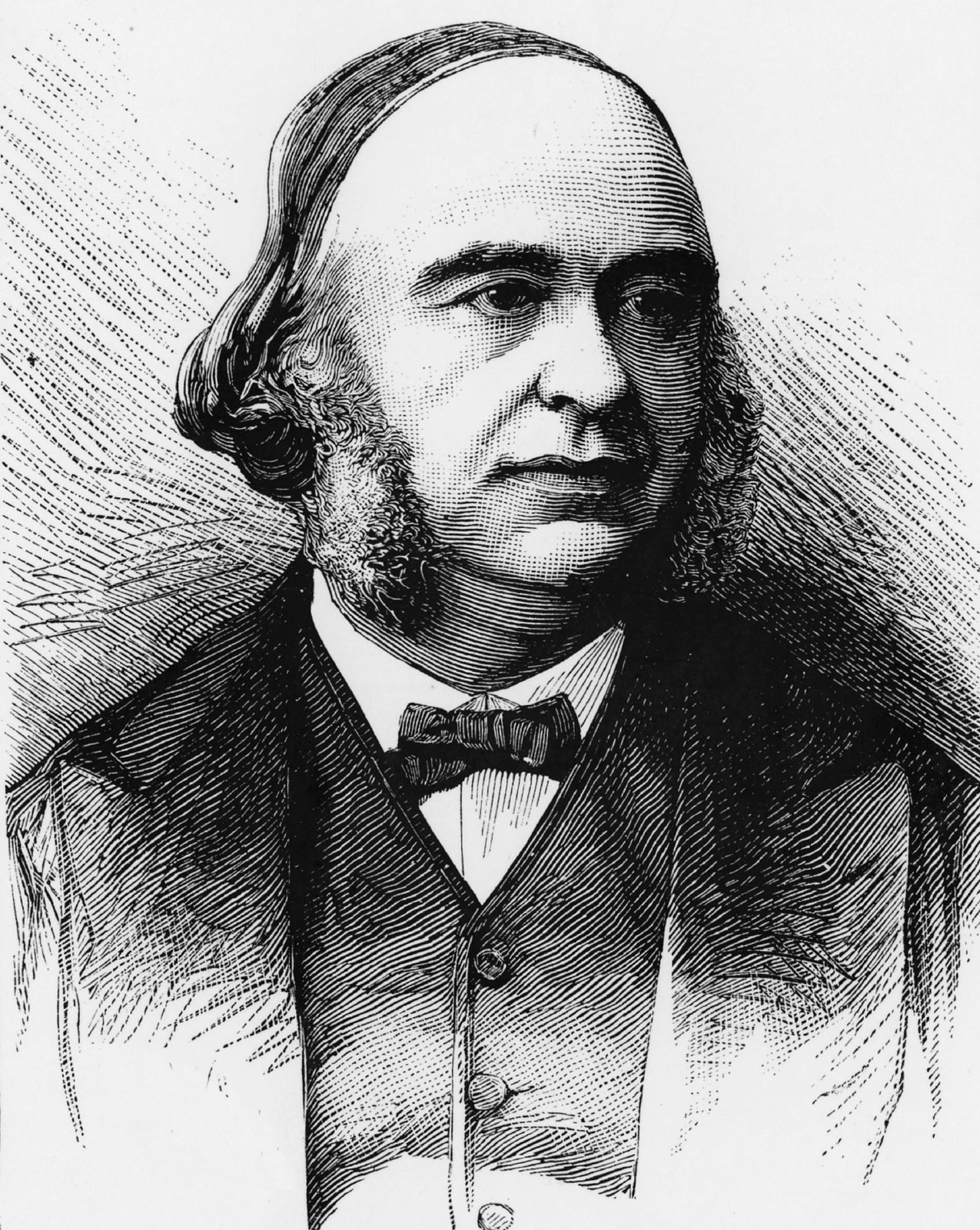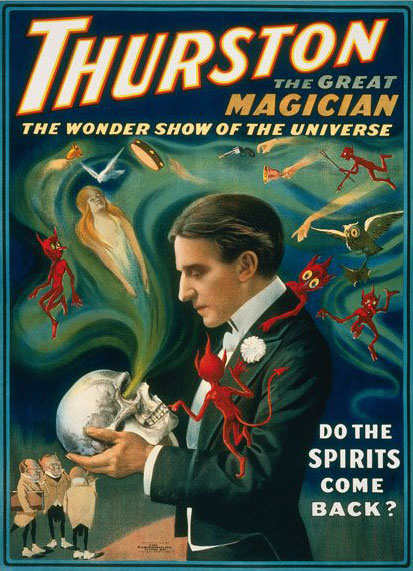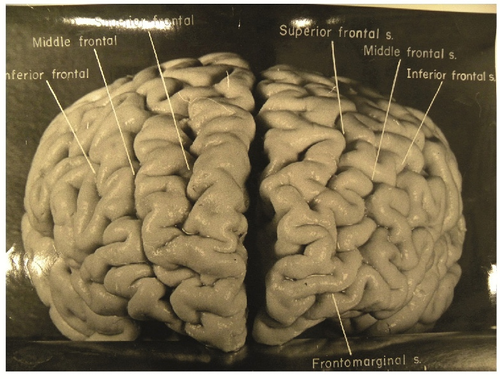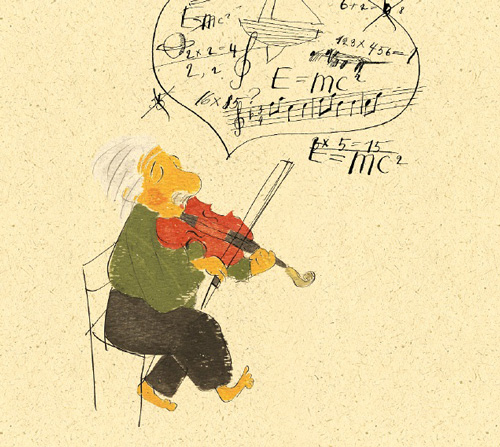by Maria Popova: From Medieval sword-fighters to Broca’s brains, or why the hand may hold the key to the link between creativity and mental illness.
“Sahara is too little price / to pay for thy Right hand,” Emily Dickinson wrote in a poem. “The right hand = the hand that is aggressive, the hand that masturbates,” Susan Sontag pondered in her diary in 1964. “Therefore, to prefer the left hand! … To romanticize it, to sentimentalize it!”The human hand has long carried cultural baggage, and yet we still struggle to unclutch from it the myths and reveal the realities.
The question of why some humans are left-handed — including such notable specimens asPlato, Charles Darwin, Carl Sagan, Debbie Millman, Stephen Jay Gould, Noam Chomsky, and Albert Einstein* — has perplexed scientists for centuries. For Southpaws themselves — the affectionate term for lefties — this biological peculiarity has been everything from a source of stigma to a point of pride. But at the heart of it remains an evolutionary mystery — one that Wiredcontributing editor David Wolman, himself (but of course) a lefty, sets out to investigate in A Left-Hand Turn Around the World: Chasing the Mystery and Meaning of All Things Southpaw (public library).
Wolman, who spoke about the oddity of handedness in a fantastic recent Radiolab episode about conflict, traces 200 years of biological and psychological perplexity as he scours the world for answers, from a Parisian science museum that houses pioneering French surgeon and scholar Paul Broca’s bottled brains to a castle in Scotland that hides clues to the heritability of left-handedness to the neuroscience labs of Berkeley to the golf courses of Japan.
To be sure, a Southpaw wasn’t always a mere scientific curiosity, let alone the “lefty superiority complex” which Wolman both notes and embodies — for centuries, it was the subject of superstition, which bestowed upon its owner a serious social curse. Wolman writes:
In the Western world, left-handedness has long been associated with the worst of the worst: sin, devil worship, Satan himself, and just an all-around bad position with God. Catholic schoolteachers used to tell students that left-handedness was “the mark of the Beast,” the Scots say a person with terrible luck must have been baptized by a left-handed priest, and orthodox Jews wrap their left arms in the leather strap of tefillin as if to say, in the words of Rabbi Lawrence Kushner: “Here I am, standing with my dangerous side bridled, ready to pray ” The Bible is full of references to hands, and usually they are about God doing something benevolent and holy with his right hand. I’ll spare you the run-through and stick to a token example, like this one from Psalms 118: “The right hand of the Lord is exalted. The right hand of the Lord doeth valiantly.”
While Carl Sagan once hypothesized that the cultural link between left-handedness and badness arose due to the left hand’s use for hygiene purposes in nonindustrialized countries, Wolman points out that the association has much deeper roots, including the very etymology of the word “left”:
The Anglo-Saxon lyft means weak or broken, and even modern dictionaries include such meanings for left as “defective,” “crippled,” “awkward,” “clumsy,” “inept,” and “maladroit,” the latter one borrowed from French, translated literally as “bad right.” Most definitions of left reduce to an image of doubtful sincerity and clumsiness, and the Latin word for left, sinister, is a well-known beauty. From this version springs my favorite term for left-handedness, “the bend sinister,” which Vladimir Nabokov used for the title of a book that has nothing to do with handedness.
Even today, our understanding of handedness is muddled by misconceptions. While it’s currently estimated that 10-12% of the human population is left-handed, the very definition of handedness is cause for confusion:
Most people presume the hand used for writing is the litmus test for determining whether someone is lefty or righty, and for anyone content to live with a pedestrian level of knowledge on the subject, this narrow reading will serve well enough. [And yet] everyday tasks, like throwing and eating, also influence the popular understanding of hand dominance, sometimes nearly as strongly as writing. These different behaviors lead immediately to a quintessential problem of handedness inquiries: how to define handedness itself. The definition of lefty or righty varies, sometimes to a frustrating degree, and that variation has troubled researchers who want to get a better handle on why it is that humans have hand preference and performance discrepancies in the first place, where these discrepancies come from, and why as a population we usually favor the right hand.
Also to be accounted for is the fact that many people are born with a natural inclination to write with the left hand but are schooled out of it for various reasons. (I myself, an adult righty, am among them. The most visceral evidence is found on my left thumb, whose pad an elongated scar splits vertically. It was inflicted while carving a watermelon jack-o-lantern at age six and accidentally flipping the knife the wrong way, pressing onto its edge rather than its blunt side. The fact that I held the knife in my left hand is cited to this day as indication of my natural left-handedness. The fact that I held the knife at all is cited as indication of questionable parenting.)
The most commonly used test for handedness is this imperfect inventory created in the early 1970s, which generates what researchers call a laterality quotient:
Still, even if we were able to codify handedness, the question of why the dichotomy exists in the first place remains open. But before diving into the various theories, Wolman offers an essential primer on how the brain works:
It’s a well-known aspect of the brain-body relationship that control of movement is crisscrossed. That is, the act of swatting at a buzzing mosquito with the right hand is controlled by the left side of the brain, or more specifically by a certain area of the left hemisphere known as the left motor cortex, which sends the necessary signals to muscles in the right arm. The reverse is true for actions carried out with the left hand, and all of this is irrespective of handedness. The hemisphere on the same side as a movement isn’t entirely silent … but for the most part motor control comes from the opposite hemisphere. This contralateral control, first described by Hippocrates himself, isn’t limited to hands. It applies to arms, legs, eyes, ears, and indeed almost all motor faculties, which is why people who’ve had a stroke or tumor on one side of the brain often experience partial or total paralysis on the opposite side of the body.
[…]
The left and right sides of the brain are physically quite distinct. The brain is made up of two mostly separate halves, each composed of billions and billions of neural connections. Yet despite popular notions to the contrary, left-handed people do not think in the right hemisphere of the brain, nor do right-handers think in the left hemisphere. The motor cortex, that part of each hemisphere cross-wired to control the other side of the body, is only one relatively minor aspect of this dizzyingly complex organ, and it says nothing or nearly nothing about a person’s thoughts or personality.
So what can the brain reveal about handedness? One of the first scientists to ponder the mystery of left-handedness was pioneering French surgeon Paul Broca, whom Wolman calls “the closest thing the religion of Southpaw has to a prophet.” In 1861, just two years after Darwin had discovered the principles of evolution, Broca encountered two patients who stumped him profoundly. One was an epileptic man named Leborgne but known as “Tan,” nicknamed after the only syllable he was capable of uttering. Leborgne was able to understand spoken language but couldn’t articulate his thoughts in speech — something that perplexed Broca enormously, doubly so given that one of Leborgne’s first symptoms was a weakening of function in the right side of his body, which progressed to more loss of motor control and eventually the loss of sight and some of his mental faculties.
When Leborgne died at the age of 51, Broca decided to crack the mystery — literally. He dissected Leborgne’s brain and found massive lesion in the left frontal cortex, likely due to a tumor. Broca concluded that this must somehow be related to Leborgne’s symptoms, of which the loss of speech was the most dramatic. But a direct link would take longer to recover.
Then came Lelong, an elderly patient who had ended up in Broca’s care after a fall, only able to utter a few words. When Lelong died two weeks later, Broca discovered a similarly dramatic lesion in the left side of his brain, which is preserved to this day in Paris.
But the most perplexing of Broca’s patients were the few who had either had damage to the left hemisphere but no difficulties with speech or who had lost their ability to speak but only had damage in the right hemisphere. This led Broca to conclude that for a minority of people, the speech centers were located in the right rather than left hemispheres, which he at first thought might be tied to handedness, but later surmised that both phenomena were anomalous exceptions and weren’t correlated. Still, his work was the first significant spark for the study of handedness and stirred quite the flurry within the scientific community. Wolman points out the clash between science and popular culture that ensued:
Because some people are an exception to the language-to-the-left rule, and because a similarly small proportion of people are left-handed, everyone and his cousin in the medical establishment figured the two must go hand in hand; lefties should have language lateralized to the right. What’s interesting about this conclusion is that few people in nineteenth-century Europe would have admitted to being left-handed. Detecting someone’s left-handedness would have been difficult, with eating, writing, and other major tasks all usually carried out with the right hand. What’s also interesting about this conclusion is that it’s wrong. Nearly 99 percent of right-handers have language located in the left hemisphere, and about 70 percent of lefties do. A different proportion, yes, but hardly the opposite; most lefty brains are like righty brains, at least as far as speech function is concerned. The rest either have language in the right hemisphere, or have it distributed more evenly between the two sides of the brain.
Though Broca himself had gently dismissed the link between handedness and right-hemispheric speech dominance, he hadn’t gone out of his way to assert the dissociation, so the myth that lefties had their speech located in the right hemisphere persisted for nearly half a century. It wasn’t until WWI, when physicians began to notice that injured veterans who were lefties didn’t necessarily have right-hemispheric language localization, that the myth began to erode and the quest for new theories gained momentum.
Wolman points to several of the notable theories that followed, each in turn disproven by science but offering a valuable piece of the still-unfinished puzzle. One of the earliest proposed that handedness in humans was originally evenly distributed, but hand-to-hand battle in the ancient world killed off the lefties because they held the sword with their left hand and the shield in their right, thus leaving the heart much less protected than for righties, who held the shield on the left. As the lefties perished on the battlefield, so did their genes.
The theory was disproven for a number of reasons, including the fact that there is evidence of left-handedness long before the invention of the sword and shield as well as the biological reality that the heredity of handedness isn’t so straightforward.
A later theory proposed pretty much the opposite — that left-handedness gave warriors a competitive advantage “for much the same reason left-handed tennis players, boxers, or fencers have an advantage.” Wolman cites the example of a left-handed 16th-century Scottish warrior from the famous Kerr clan:
The lefty advantage exists because, in a world with far fewer lefties than righties, right-handed, or even left-handed, opponents have comparatively little practice facing off against left-handers. Lefty forehands are hit from that less familiar side, their stronger punches originate from that less comfortable side, and their opposing stance differs from what people are accustomed to, namely right-handed opponents. For Andrew Kerr, the matter was of far greater import than for, say, John McEnroe serving up another ace to the ad-court at Wimbledon; for Kerr, success with the sword was a matter of life and death.
[…]
French scientists recently hypothesized that fighting advantages for left-handers in prehistoric human societies ensured reproductive success. To test the idea, they looked at the homicide rates in various societies, wondering if the Southpaw advantage might be magnified within historically more violent populations. From the results, it looks like it was, with proportions of left-handedness ranging from 3.4 percent in an especially pacifist African community in Burkina Faso to 22.6 percent in a notoriously violent culture in South America. Southpaws aren’t more violent, of course, but may have had a survival advantage in societies that were.
Still, these hypotheses were never proven with any degree of verifiability. Fast-forward to the late 1970s and early 1980s, when Harvard neurologist Norman Geschwind proposed a theory that endured for many years: He suggested that high levels of testosterone in the womb led to a minor mutation in the brain, which caused its organization to shift away from right-handedness. One support point cited for his theory is the fact that there are slightly more male lefties than female.
An earlier womb theory had posited that the fetus’s orientation inside fosters its sense of stability, so handedness is based on whether fetus uses the left or right hand for balance — the free hand, in most cases the right, can then move and explore, eventually becoming the dominant one.
Once again, neither theory found sufficient support. And so we return to the brain and genetics. Wolman cites the work of English researcher Marian Annett, who discovered the key to the messy heredity patterns of handedness:
In 1972, Annett … published a paper titled, “The Distribution of Manual Asymmetry,” which, although of little notice at the time, would later serve as the foundation for one of the most widely accepted explanations of human handedness. She called it the Right Shift Theory, and she later expanded it in a 1985 volume of the same name. Annett argues that whereas human handedness is comparable to the left- or right-side preferences exhibited by other creatures with hands, paws, feet, or what have you, the approximate 90 percent predominance of right-handedness in the human population sets us apart. All other animals have a 50-50 split between righties and lefties. According to Annett’s model, handedness in nature rests on a continuum, ranging from strong left, through mixed, and then to strong right-handedness. But for humanity the distribution of preference and performance is dramatically shifted to the right. Human bias to the right, Annett explains, was triggered by a shift to the left hemisphere of the brain for certain cognitive functions, most likely speech. . . . That momentous shift was caused by a gene.
Of course, that question had perplexed generations of scientists since Darwin — who, by the way, was a victim of the confounding heredity of handedness: his wife and father-in-law were lefties, but only two of Darwin and Emma’s ten children were. But Annett’s Right Shift Theory was the first systematic explanation for the genetics of handedness. Still, Wolman observes the complexities of genetics:
In many ways, the genes-versus-environment dichotomy is a misleading one because so often the two work hand in hand. Say, for instance, a gene or genes instructs for a certain amount of testosterone in the womb. If the level of that hormone varies and somehow influences the development of the fetus, should traits affected by the level of testosterone be dubbed genetic or environmental? One could argue that the biochemical conditions in the womb-the fetus’s surroundings-qualify as environmental factors, but those conditions are shaped by genetic instructions. Yet within the DNA of every cell of that newborn baby, there will be no information specific to the child’s conditions in the womb. Can we call that a genetic trait? Luckily, Annett’s theory supposes a less ambivalent role for a gene, or possibly a few genes. Inside the nuclei of nearly every cell in the body are left-twisting bundles of DNA that either do or do not contain what Annett has dubbed the “Right Shift factor.”
What this series of hypotheses reveals, more than anything, is just how little we know about the inner workings of the body — despite having sequenced the human genome, here we are still struggling to explain as seemingly simple a characteristic as handedness. And yet, Wolman argues, Annett’s research was groundbreaking and immensely valuable for three reasons: “the idea of a handedness continuum; the chance-based gene predicting not individual handedness but shifted population distribution; and finally the suggestion that people are not left-handed or right-handed, but right-handed or non-right-handed.”
Perhaps the most interesting theory, however, is a rather fringe proposition that ties handedness to “magical ideation” — one’s tendency to believe in metaphysical phenomena beyond that aren’t scientifically verifiable, from supernatural forces to extrasensory perception to reincarnation and other concepts that wouldn’t hold up to Carl Sagan’s Baloney Detection Kit. Wolman cites New Zealand scholar Michael Corballis, who has written about the potential link between more brain symmetry — something found in lefties — and magical ideation:
Hemispheric asymmetry itself may lead to more decisive and controlled action, and perhaps a better ability to organize hierarchical processes, as in language, manufacture, and theory of mind. Those individuals who lack cerebral asymmetry [a.k.a. increased symmetry] may be more susceptible to superstition and magical thinking, but more creative and perhaps more spatially aware.
On the magical ideation scale — the measure of belief in such phenomena — lefties tend to score higher than righties. And yet, Wolman points out, “anecdotal evidence that lefties are highly represented in low-bullshit-tolerating professions such as journalism and science doesn’t exactly support this notion,” suggesting instead that the magical ideation hypothesis is best “recalibrated as a degree-not-direction descriptor.”
What makes this theory intriguing, however, isn’t its verifiability or lack thereof but what it reveals about our culture’s beliefs about creativity and mental illness, or cognitive abnormality. Wolman writes:
The magical ideation line of thinking loops back to creativity when we consider findings indicating an increased proportion of left-handers who suffer from such disorders as schizophrenia. With due acknowledgment once again to Corballis for synthesis of this idea, it’s plausible that schizophrenia and magical ideation sprout from similar neurological roots. Research demonstrating connections between mixed-handedness and either of these two conditions advances that plausibility.
[…]
Consider for a moment that there’s a thin, perhaps blurred line between genius and mental illness. What if some types of genius stem from the same aspect of the brain — or influence on the brain — as, say, magical ideation and schizophrenia, and that subtle variation in the arrangement of certain brain circuits determines the difference between the next da Vinci, the next graphology believer, the next Hendrix-like guitar god, or the next schizophrenic?
Wolman points to Kim Peek, the autistic “megasavant” on whom the film Rain Man is based, and perhaps most notably Albert Einstein, celebrated as “the quintessential modern genius”:
Examination of his brain after death showed unusual anatomical symmetry that … can mean above-normal interhemispheric connections. Then there’s the fact that Einstein’s genius is often linked with an imagination supercharged with imagery, a highly right hemisphere-dependent function. It was that kind of imagination that ignited questions leading eventually to the Theory of Relativity: what does a person on a moving train see compared with what a person standing still sees, and how would the body age if traveling near the speed of light in a spaceship compared to the aging process observed on Earth? Is it such a stretch to speculate that Einstein landed on the fortunate end of the same brain organization spectrum upon which other, less lucky individuals land in the mental illness category? And what if handedness too is influenced by this organizational crapshoot?
Illustration by Vladimir Radunsky for ‘On a Beam of Light: A Story of Albert Einstein.’ Click image for details.
The investigation is ever-ongoing, but Wolman offers a wealth of other pause-giving findings and theories in the rest of A Left-Hand Turn Around the World.
* Einstein’s handedness is somewhat a matter of debate. While he is often cited among history’s famous lefties, laterality scholars have surmised that he was mixed-handed — which is not to be confused with ambidextrous: mixed-handed people use the right hand for some things and the left for others, whereas the ambidextrous can use both hands equally well for most tasks.
















































